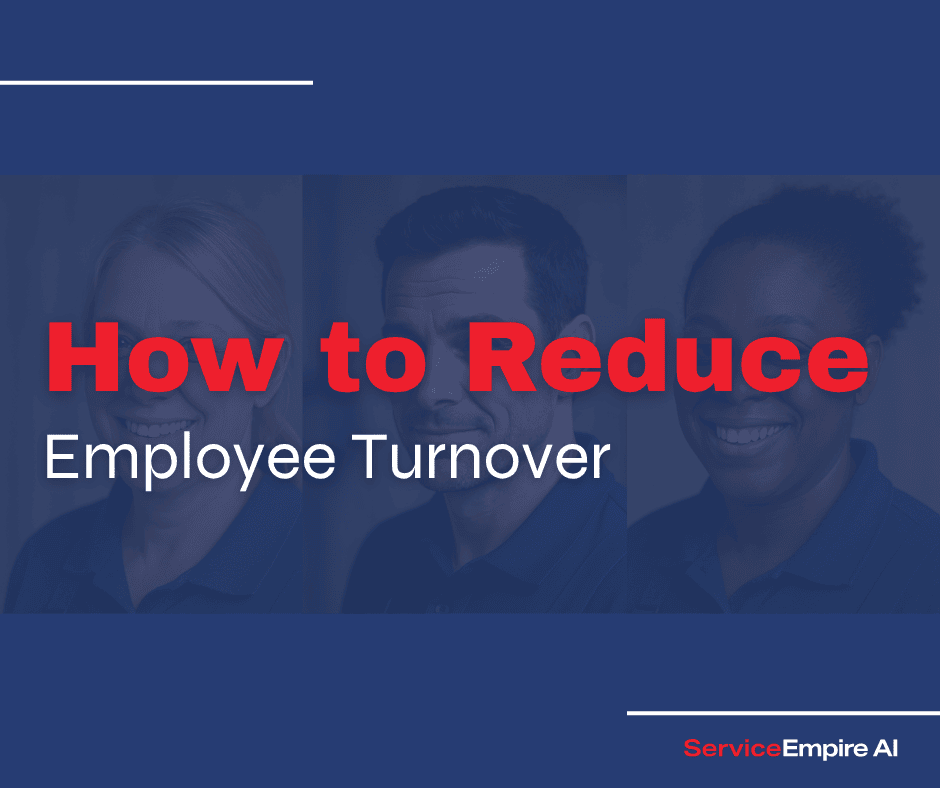
Tired of constantly hiring and training new employees? Here's how top service companies build great teams and keep their best people longer.
Understand Exit Patterns
Start by analyzing why people quit their job or leave. Conduct exit interviews and actually listen to the feedback. Look for patterns in departure timing – are people leaving at certain milestones (2 years in) or during specific seasons (winter)? Understanding these patterns helps you address issues before they cause turnover.
Track the real cost of turnover for your business. Include obvious costs like recruiting and training. But don't forget hidden costs like lost productivity and strained customer relationships. This data helps justify investing in retention strategies.
Build Better Retention
Create clear growth paths for every position. People stay longer when they see a future with your company. Show employees how they can advance, what skills they need to develop, and what opportunities exist for progression.
Focus on engaging employees from day one. The first 90 days are crucial for long-term retention. Create an onboarding process that makes new hires feel welcome, supported, and confident in their decision to join your team.
Train Managers
Train your managers to spot early warning signs of dissatisfaction. Changes in behavior, attitude, or performance often signal that someone's thinking about leaving. Quick intervention at this stage can prevent departures.
Teach supervisors how to have meaningful career conversations. Many employees leave because they don't feel heard or valued. Have one-on-one meetings focused on growth and development, not just productivity. Show employees you're invested in their future.
Smart Implementation
Start with your most valuable employees. It is true that everyone on your team matters. However, when you retain your top performers and key position holders, it makes it easier to reduce turnover among the whole team. Their satisfaction often influences others and their departures are the most costly.
Create personalized retention plans based on individual motivations. Some people want more responsibility, others prefer stability. Understanding what drives each person helps you provide the right incentives and support.
Check Engagement Metrics
Check engagement levels through regular surveys and conversations. Watch for changes in team dynamics or satisfaction levels. Small issues are easier to fix before they become reasons to leave.
Track retention rates by department, position, and manager. This data helps identify where retention strategies are working and where they need adjustment. Compare your rates to industry standards to gauge your success.
Track ROI
Calculate the return on your retention investments. Compare the cost of retention programs to the savings from reduced turnover. Use this data to justify and adjust your retention budget.
Look beyond the numbers. Consider qualitative benefits like boosted team motivation, better customer service, and stronger morale. These factors affect your bottom line even if they're harder to measure.
Have a Prevention Strategy
Build a positive workplace culture that people don't want to leave. Encourage open communication, recognize good work, and address problems promptly. Culture plays a huge role in retention.
Offer competitive compensation but remember that money isn't everything. Benefits, flexibility, and growth opportunities often matter more than salary alone. Regular market comparisons help ensure your total package stays competitive.
Remember that good retention starts with good hiring. Take time to find people who fit your culture and values. The best retention strategy can't fix poor hiring decisions. When you hire right and follow these retention practices, you'll build a stable, engaged team that drives your business forward. And it should reduce your turnover by 40% or more!
We have more resources that can help you with this important topic. Check them out below.





